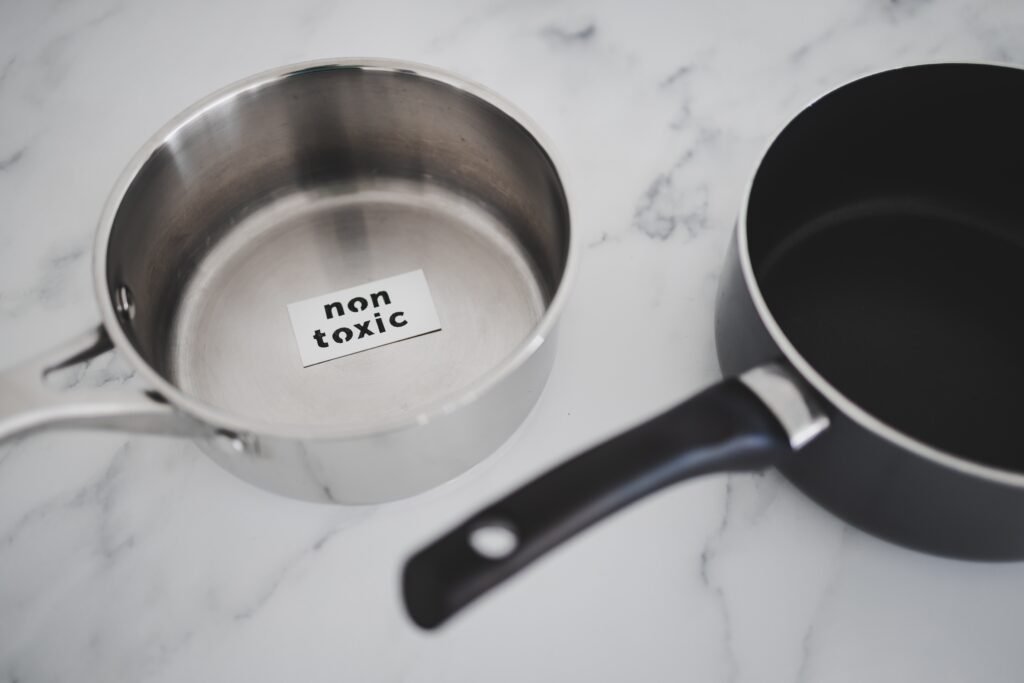The truth behind “nontoxic” cookware might not be as clear-cut as you think, posing questions about consumer safety and industry transparency.
Story Snapshot
- Investigation into “nontoxic” cookware safety claims
- Rise in consumer demand for chemical-free cookware
- Examination of regulatory landscape and scientific evidence
- Comparison of different “nontoxic” materials and marketing claims
Consumer Demand for Nontoxic Cookware
As awareness of potential health risks associated with traditional nonstick cookware grew in the early 2000s, consumers began seeking safer alternatives. The rise of the wellness movement brought increased scrutiny to household products, including cookware. Brands responded by marketing products as “nontoxic,” promising freedom from harmful chemicals like PFAS and heavy metals. Yet, the term “nontoxic” remains unregulated, leading to potential discrepancies between marketing claims and actual safety.
Despite the absence of regulatory guidelines, consumer demand for these products has surged, with many seeking cookware free from “forever chemicals” and heavy metals. The challenge lies in distinguishing genuinely safe products from those merely capitalizing on the latest health trends. This situation has prompted third-party testing and regulatory scrutiny to become essential in verifying manufacturers’ claims.
How Nontoxic Is ‘Nontoxic’ Cookware?
If you’re looking for a new pot or frying pan these days, prepare to get bombarded by terms like “nontoxic,” “PFAS-free” and “PTFE-free.”
But these labels don’t necessarily mean what you might think.https://t.co/KhYoEAXwka
— Truth in Advertising (@TruthinAd) October 27, 2025
Analyzing the Safety of Cookware Materials
Various materials are touted as nontoxic, each with its advantages and limitations. Ceramic, stainless steel, cast iron, and glass are popular options, but not all are created equal. Ceramic coatings, while free from PFAS, might degrade and release nanoparticles, though evidence on this is inconclusive. Stainless steel and cast iron offer durability and are generally well-regarded, but concerns about heavy metal leaching persist if they are poorly manufactured.
Functional medicine experts often recommend glass, pure ceramic, and seasoned cast iron as safer choices, emphasizing the importance of third-party testing to verify safety claims. Manufacturers like Made In and Caraway are now publicizing independent lab results to build consumer trust, demonstrating compliance with safety standards for PFAS and heavy metals.
Regulatory Landscape and Challenges
The regulatory environment for nontoxic cookware is complex and inconsistent. While the European Union has imposed stricter rules on PFAS usage, the United States lags behind, with varying state-level regulations adding to the confusion. Advocacy groups are calling for more comprehensive federal standards to ensure consumer safety across the board.
In response, some US states have introduced bills to ban PFAS in cookware, but these efforts remain fragmented. Consequently, consumers must rely on third-party certifications and independent testing to navigate the marketplace, placing additional pressure on manufacturers to maintain transparency and compliance.
Sources:
Organic Authority
Functional Medicine Coaching
Made In Cookware
Gimme the Good Stuff
Ceramics.org
NephCure







